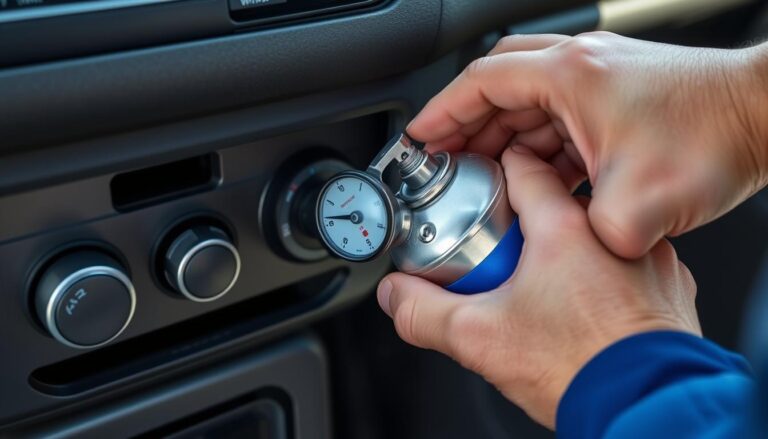The torque specs for F150 lug nuts typically range between 100-150 ft-lbs. Proper torque ensures wheel safety.
Ensuring the lug nuts on your F150 are torqued correctly is crucial for safe driving. Incorrect torque can lead to loose nuts, wheel misalignment, or even accidents. It’s essential to refer to the manufacturer’s specifications for your specific F150 model to determine the exact torque needed.
Using a torque wrench is recommended to achieve the precise torque measurement. Checking and maintaining proper torque levels at regular intervals can help prevent issues and keep your wheels secure while driving. Remember, torque specifications may vary per vehicle, so always consult the owner’s manual or a professional mechanic for accurate information.
Importance Of Torque Specs
Ensuring Safety: Proper torque specs for F150 lug nuts are crucial to prevent wheel detachment and ensure safe driving.
Preventing Damage: Using the correct torque helps prevent over-tightening, which can lead to thread damage and costly repairs.
Factors Affecting Torque Specs
Factors affecting torque specs for F150 lug nuts include the size and material of the lug nuts, the type of wheel being used, the recommended torque values from the manufacturer, and the use of a torque wrench for proper tightening.
Following these factors ensures optimal safety and performance for your F150.
| Factors Affecting Torque Specs |
| Material of Lug Nuts The material of lug nuts determines their torque specs. Quality steel lug nuts often require higher torque settings. |
| Wheel Size and Type The size and type of wheels directly impact torque requirements. Larger wheels typically need more torque compared to smaller ones. |
Finding The Correct Torque Specs
When it comes to finding the correct torque specs for F150 lug nuts, it is important to refer to the vehicle manual or manufacturer recommendations. The manual will provide the specific torque values based on the vehicle’s make and model. Following these recommendations is crucial as using the wrong torque can lead to stripped threads, loose lug nuts, or even wheel detachment. Ensure that you have the correct torque wrench and socket size for your lug nuts, then refer to the manual for the appropriate torque setting. Tighten each lug nut in a star or cross pattern to evenly distribute the pressure. Remember to recheck the torque after a short drive as the lug nuts may naturally loosen. Proper torque ensures the safety and longevity of your wheels, so always consult the manual to find the correct torque specs for your F150.
Impact Of Incorrect Torque Specs
Incorrect torque specs can lead to uneven pressure distribution on the lug nuts, causing potential risk of wheel loss. The lug nuts can become loose and compromise the safety of the vehicle. It is important to adhere to the manufacturer’s recommended torque specs to ensure proper installation and secure fit of the wheels. Failing to do so may result in hazardous driving conditions and increased chances of accidents.
Torque Wrench: An Essential Tool
The torque wrench is crucial for maintaining proper torque specifications on F150 lug nuts. There are two main types of torque wrenches: click and beam. Click torque wrenches emit an audible click when the desired torque is reached, while beam torque wrenches visually display torque. Proper usage involves setting the wrench to the specified torque level and applying pressure in a consistent manner. Using a torque wrench ensures optimal tightening without over-torquing, preventing potential issues like loose lug nuts or stripped threads.
Best Practices For Torquing Lug Nuts
Torque Specs for F150 Lug Nuts are crucial for vehicle safety. It is essential to follow best practices for torquing lug nuts to ensure proper wheel installation. When torquing, always use a sequential tightening pattern. After driving for about 50 miles, it is important to re-torque the lug nuts to ensure they are properly secured. This simple maintenance step can prevent potential wheel loosening and hazards on the road.
Frequently Asked Questions
What Should F-150 Lug Nuts Be Torqued To?
The lug nuts on a F-150 should be torqued to the manufacturer’s recommended specification for safety and proper installation. It is important to follow the specific torque mentioned by Ford for your specific model to avoid any damage or accidents.
What Is The Lug Nut Torque For A 2016 Ford F150?
The lug nut torque for a 2016 Ford F150 is typically around 150 ft-lbs. It is important to use a torque wrench for precise tightening.
What Torque Should Lug Nuts Be Tightened To?
Lug nuts should be tightened to the specified torque in the vehicle’s owner’s manual. It is essential to use a torque wrench for accuracy and prevent over-tightening or under-tightening. Following the recommended torque ensures proper wheel alignment and prevents damage.
What Is The Ft Lbs Torque For Lug Nuts?
The ft lbs torque for lug nuts is typically between 80 and 100, depending on the size of the lug nut and the vehicle. It’s important to use a torque wrench to ensure proper tightening. Over-tightening can damage the threads and under-tightening can lead to loose wheels.
Faq 1: What Are The Torque Specs For F150 Lug Nuts?
To ensure proper wheel installation, the torque specs for F150 lug nuts should be set at 150-165 lb-ft.
Conclusion
Ensure safety by following correct torque specs for F150 lug nuts. Proper maintenance is crucial for vehicle performance and longevity. Regularly checking and tightening lug nuts can prevent accidents and ensure smooth driving experience. Stay informed and maintain your F150 with the right torque specifications for optimal safety and functionality.


